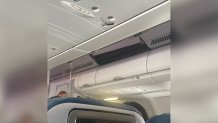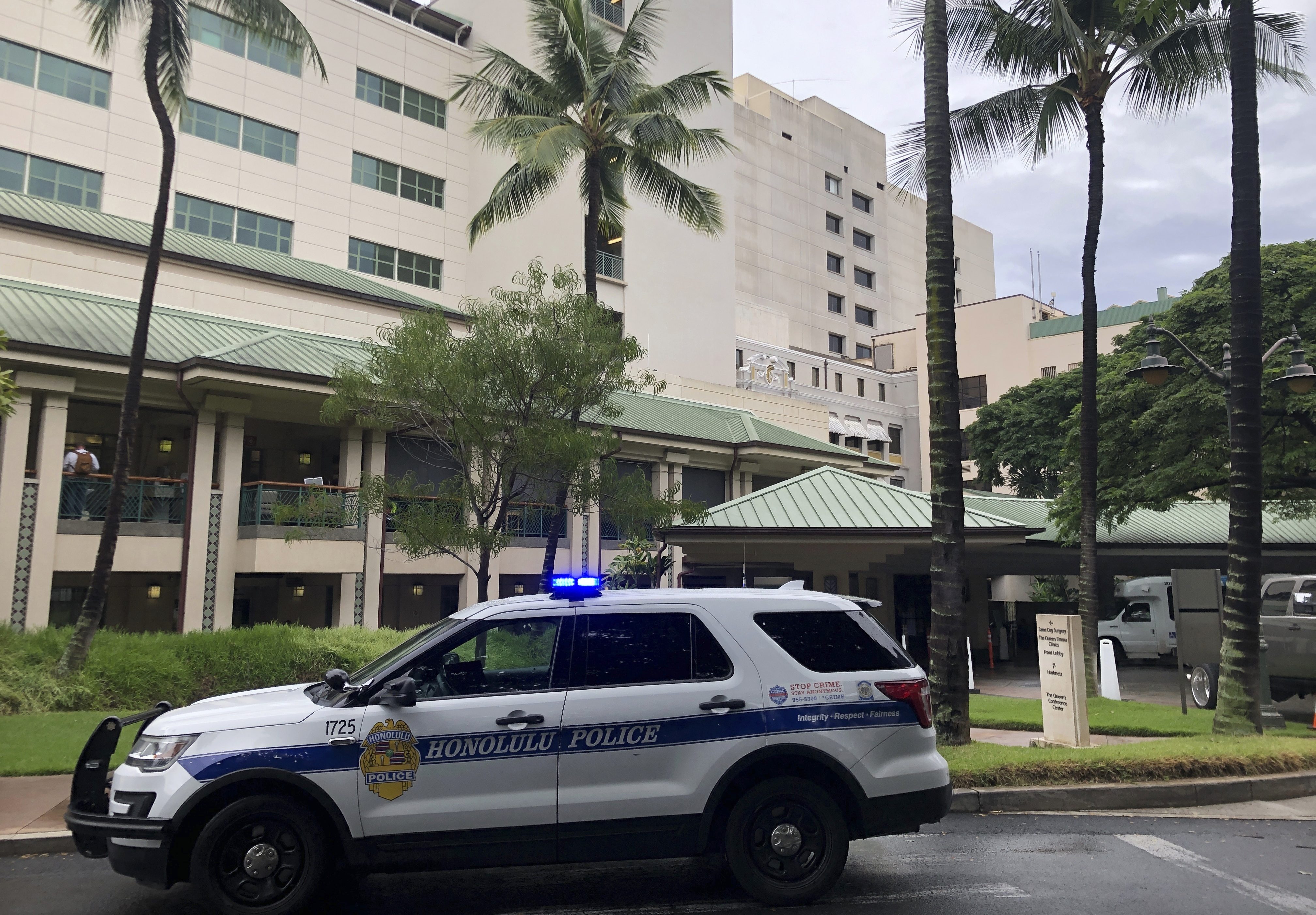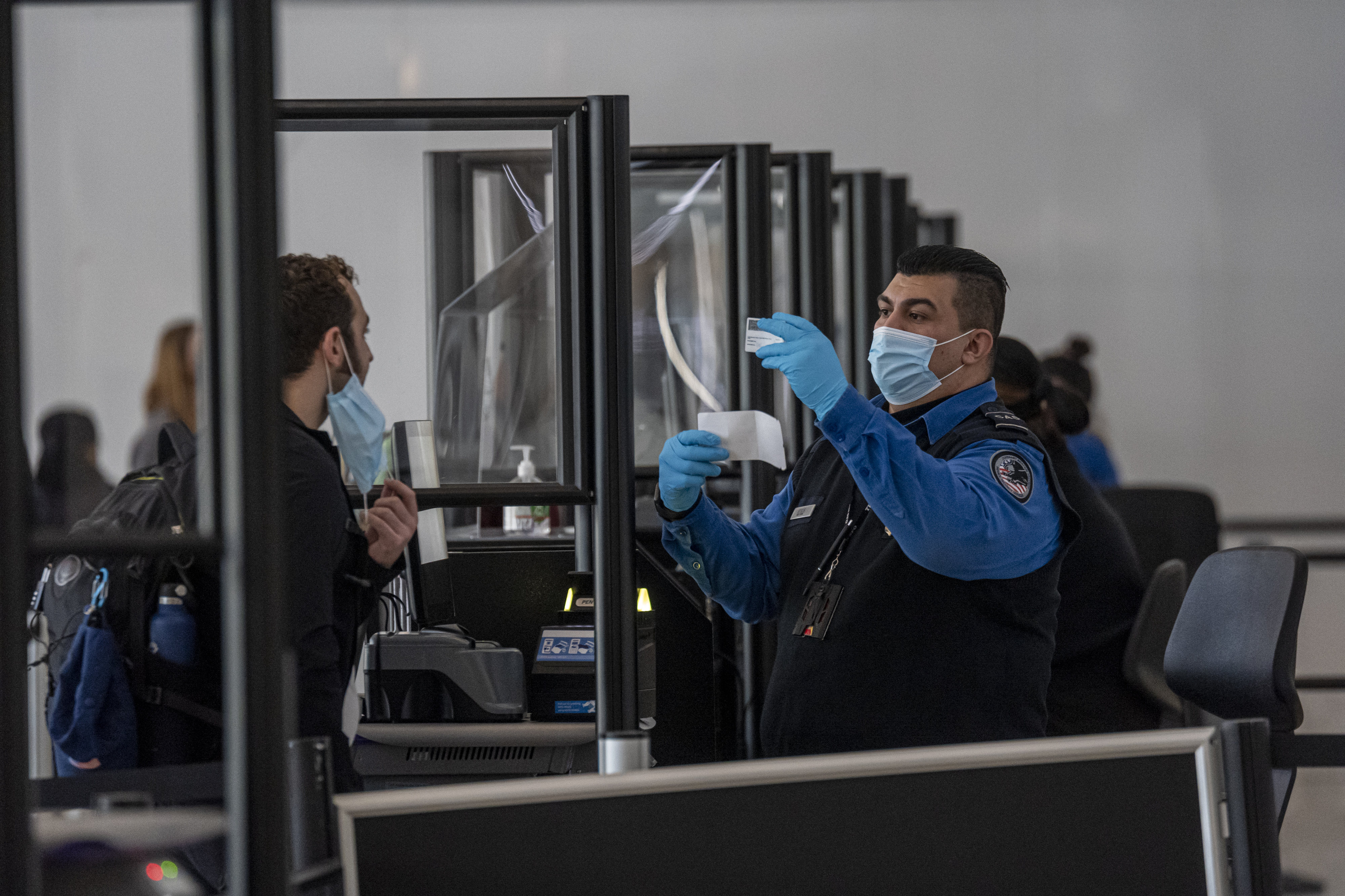Tiffany Reyes had just gotten back to her seat from the bathroom and was about to buckle her safety belt when Hawaiian Airlines Flight 35 dipped.
In an instant, Reyes found herself on the aisle floor, staring up at caved-in ceiling panels and a cracked bathroom sign that was hanging.
“I asked everyone around me, ’Was that me?” Reyes said in an interview Monday. “They said I had apparently flown into the ceiling and slammed into the ground.”
Reyes, 40, was among 20 people on the flight — passengers and crew — taken to hospitals after turbulence struck their plane flying from Phoenix to Honolulu without warning Sunday.
We've got the news you need to know to start your day. Sign up for the First & 4Most morning newsletter — delivered to your inbox daily. >Sign up here.

Eleven people were in serious condition. In all, 36 people received medical treatment for bumps, bruises, cuts and nausea, said Jim Ireland, director of Honolulu Emergency Medical Services.
Reyes was heading home after picking up her daughter Kaylee from college. She initially thought something had hit the plane and that it was crashing. She briefly thought they were going to die because she had never encountered anything so violent on a flight before.
“That’s the most terrifying experience I’ve been through in my whole 40 years of life,” Reyes said.
Reyes wasn’t bleeding. And the adrenaline surging through her dulled the pain that would eventually come. She crawled back into her seat. And her daughter, who was buckled up and escaped injury, “just held me the whole time.”
Others had it much worse, Reyes said. She saw a woman walk off the plane with gashes in her head and blood on her face and clothes.
An ambulance took Reyes to an emergency room where she received X-rays, had her blood taken and various other screenings. After five hours there, she and her family – her daughter, son and husband – went home to decompress.
She had a headache which began to fade Sunday night. But the left side of her body started to ache.
“I can’t even move around in bed,” Reyes said. “So I have to sleep right on my back without even moving.”
The National Transportation Safety Board said Monday it is investigating the incident.
The full flight had nearly 300 people aboard and carried many passengers traveling to Hawaii for the holidays, like Jacie Hayata Ano, who was heading home.
“It was just rocky,” she told KHON-TV. “And then, it quickly just escalated to the point where we’re shaking so much that we were pretty much like floating off of our chairs."
Hawaiian Airlines Chief Operating Officer Jon Snook said such turbulence is isolated and unusual, noting the airline had not experienced anything like it in recent history. Three flight attendants were among the injured, he said.
Jazmin Bitanga, who was also traveling home for the holidays, said there were two drops in altitude, including one that was so strong it sent her boyfriend’s water bottle into the plane’s ceiling.
“Just all around me, there were people crying,” she told Hawaii News Now.
There was some internal damage to the aircraft during the turbulence, Snook said. The fasten-seat belts sign was on at the time, though some of those injured were not wearing them, he said.
The airline was aware of the forecast for thunderstorms and unstable air and weather conditions, but had no warning that the particular patch of air where the turbulence occurred "was in any way dangerous,” Snook said.
He did not know how much altitude the plane lost during the turbulence, saying that would be part of an investigation involving the National Transportation Safety Board. The plane's flight data recorder would provide those details, he said.
The investigation would also address precisely what the passengers and crew were doing at the time, he said.
The Airbus A330-200 began its descent immediately after the turbulence, Snook said. The crew declared an emergency because of the number of injuries on board and air traffic controllers gave the flight priority to land.
The aircraft will undergo a thorough inspection and maintenance, mostly to fix components in the cabin, Snook said.
Snook said he could only speculate whether some passengers hit their heads, but that was likely based on the injuries and the damage to cabin paneling.
“If you don’t have your seat belt on, you stay where you are as the aircraft goes down, and that’s how those injuries occur,” Snook said.
The investigation will examine what other measures were taken, aside from turning on the fasten seat belt sign, to ensure passengers were buckled in, he said.
A high wind warning and flood watch were in effect Monday for Hawaii as a strong front moves across the islands, according to the National Weather Service.
On Monday, severe turbulence hit a United Airlines flight traveling from Rio de Janeiro to Houston. The airline said two passengers and three crew members suffered “minor injuries” and were taken to a hospital shortly after the flight landed at George Bush Intercontinental Airport in Houston. The airline did not describe the nature of the injuries.
A 2021 NTSB report on preventing turbulence-related injuries on scheduled passenger flights said wearing a seat belt reduces the risk of serious injury. It also found that air traffic control procedures for processing pilot weather reports were “time-consuming and nonstandardized.” The report said that air carriers often share observations about turbulence with their own personnel, but not throughout the national airspace system.
In 2019, 37 passengers and flight crew members were injured when an Air Canada flight from Vancouver to Sydney hit intense turbulence about two hours past Hawaii. The Boeing 777-200 was diverted to Honolulu, where the injured received treatment. Thirty people were taken to hospitals and nine had serious injuries.
Most people associate turbulence with heavy storms. But the most dangerous type is so-called clear-air turbulence. The wind-shear phenomenon can occur in wispy cirrus clouds or even clear air near thunderstorms, as differences in temperature and pressure create powerful currents of fast-moving air.
Planes can sail into clear-air turbulence without warning.
___
Finely reported from Norfolk, Virginia. Associated Press researcher Rhonda Shafner in New York and writers Becky Bohrer in Juneau, Alaska and Jill Bleed in Little Rock, Arkansas contributed to this report.



